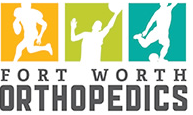What is a Terrible Triad Injury?
Terrible triad injury, also known as Unhappy triad or O’Donoghue triad, is a condition involving injury to three structures in the knee joint:
- Anterior cruciate ligament (ACL)
- Medial meniscus
- Medial collateral ligament (MCL)
The knee joint is comprised of bone, cartilage, and ligaments. It connects the femur or thighbone to the shinbones (tibia and fibula) and helps in complex movements. The anterior cruciate ligament is a stabilizing ligament running diagonally within the joint. The medial meniscus is a C-shaped cartilage on the inside of the joint that provides cushioning. The medial collateral ligament runs along the inner aspect of the knee connecting the femur to the tibia. A Terrible Triad Injury is simultaneous damage to all three of these structures. It is a severe injury that usually requires surgical intervention.
Causes of Terrible Triad Injuries
A terrible triad injury can occur when the foot is firmly fixed on the ground and a strong force pushes the knee to the inside or causes a sudden twisting action. This can lead to overstretching, damage, or tears to the ligaments and medial meniscus. Causes of terrible triad injuries include:
- Motor vehicle accidents
- Football
- Martial arts
- Rugby
- Soccer
- Skiing
Symptoms of Terrible Triad Injuries
Symptoms of terrible triad injuries vary based on the severity of the condition. This includes:
- Severe pain
- Pop’ sound in the knee at the time of injury
- Swelling
- Difficulty in movement and bearing weight
- Bruising
- Stiffness in the knee
- Loss of stability
Diagnosis of Terrible Triad Injuries
Your doctor will review your symptoms and medical history. A physical examination will be performed and your doctor will perform tests to evaluate the health of the knee ligaments and meniscus. Your doctor will order certain imaging tests to identify if the three knee structures are damaged and to rule out other injuries. These tests include:
- MRI scan: This study uses radio waves and a large magnetic field to produce images of the soft tissues such as the ligaments and menisci to identify damage.
- Ultrasound: This test uses high-frequency sound waves to produce images of the bones, ligaments, and tissues. Ultrasound imaging can be performed with the motion of the knee that helps identify certain tears.
- X-rays: This study uses high electromagnetic energy beams to produce images of the bones to help detect fractures.
Treatment for Terrible Triad Injuries
Immediately after a terrible triad injury, your doctor will recommend the PRICE method as a form of conservative treatment to manage symptoms. This includes:
- Protection: Protect the area from further injury by limiting weight-bearing or immobilizing the injury.
- Rest: Resting is necessary to prevent further worsening of the condition.
- Ice: You will be advised to apply ice to reduce swelling and pain.
- Compression: Your doctor will suggest you wear compression bandages to reduce the swelling.
- Elevation: Elevate your knee above heart level to reduce swelling and pain.
If conservative methods are found to be ineffective, surgery will be recommended to repair multiple tears present in the ligaments. This includes:
- ACL Reconstruction: The ACL reconstruction is performed by replacing the ligament with a tissue graft from the hamstring or patellar tendon to restore the stability of the knee.
- A torn meniscus is removed by a minimally invasive technique
- The MCL heals naturally without any repair.
Physical Therapy: Following surgery, your doctor will recommend a long course of physical therapy and rehabilitation for improving strength and stabilization and helping you return to regular activities. Physical therapy is also recommended if you are not having surgery and your symptoms have been managed conservatively. However, most terrible triad injuries require surgery to improve knee stability and to reduce the risk of arthritis.
